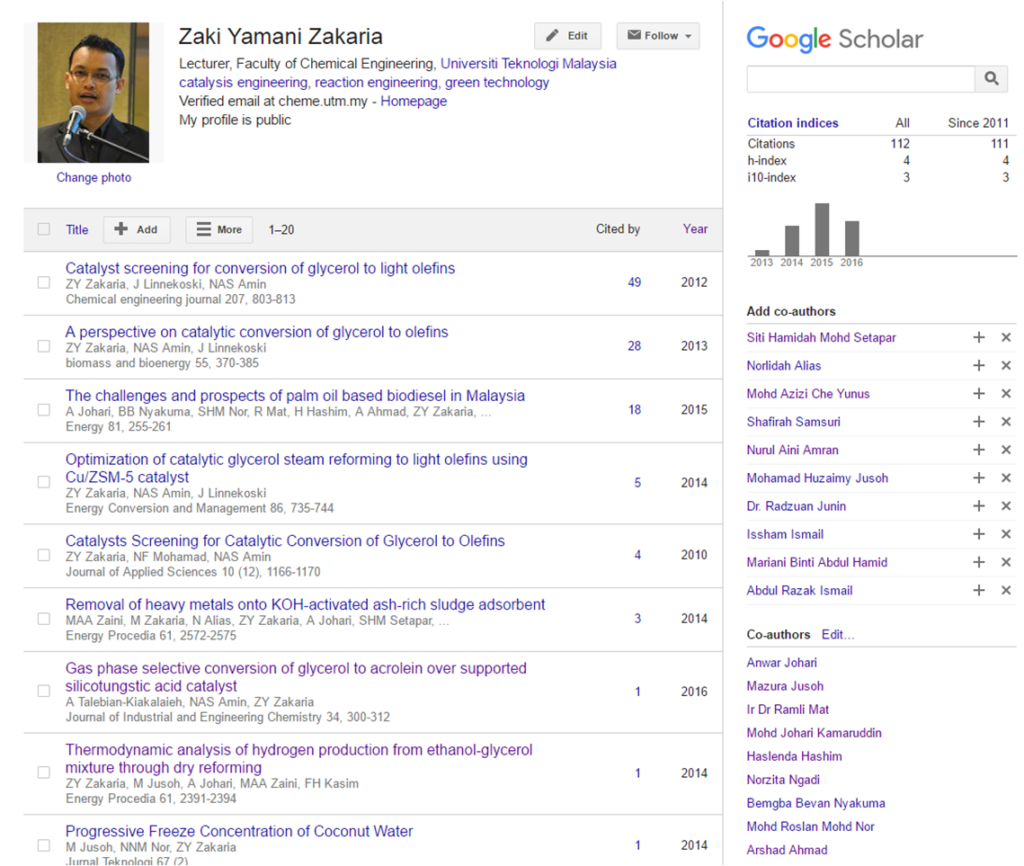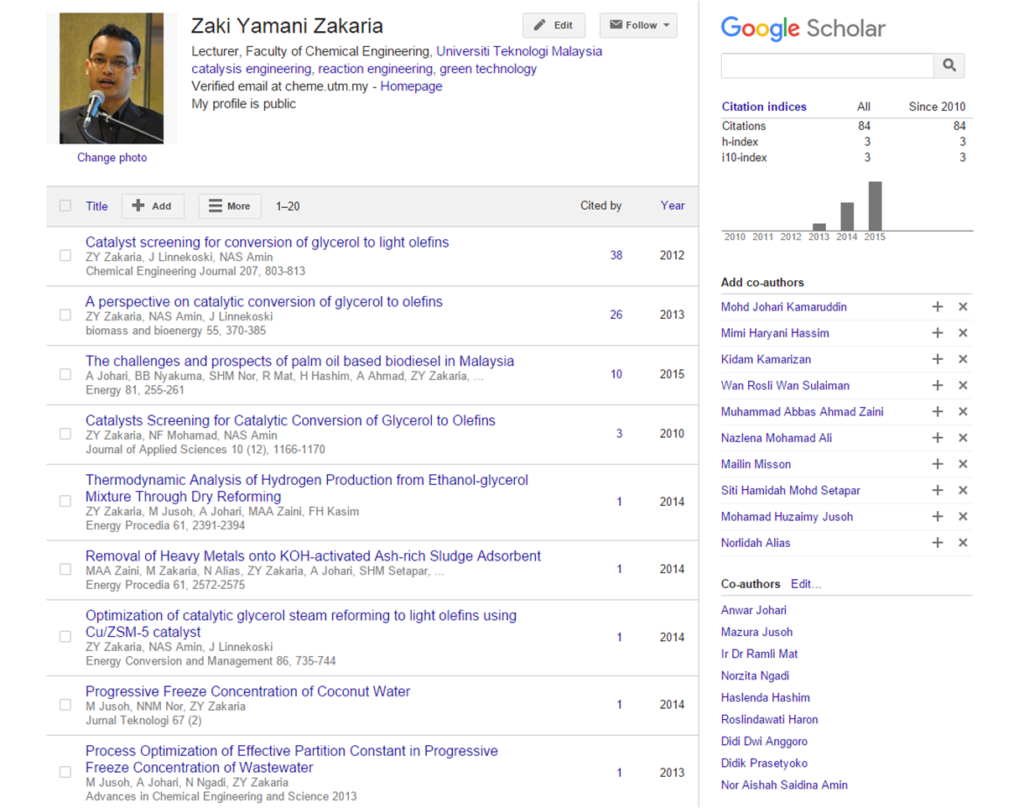Every academicians / researchers in a university all over the world will have their own Google Scholar Account by this era. I’m included. Like other comrades, I am striving hard to contribute as much as I can to the scientific community, especially those that dwell within the regions of Chemical Engineering. My Google Scholar stat info as per shown below (If you are interested to see, just click the image below to enlarge it). This is for my personal record to see, to assess, to evaluate, to reflect later in future, how I am performing as an academician / researcher. For record, I uploaded Figure 1 and Figure 2.
Figure 1: My Google Scholar Stats (updated till 20th July 2016)
……………………………………………………………………………………………………………………………………………
Summary of my Google Scholar Stat (20th July 2016) :
Figure 2: My Google Scholar Stats (updated till 31th December 2015)
My 2 cents
As a new lecturer it is not easy to straight away jump and show colourful glaring Google Scholar Stat. There are so much to do such as prepare/write/submit research proposal to get research grants, get some students (good students), supervise and monitor research, write and publish in reputable journal, participate in conferences, perhaps write 1 or 2 book chapters etc. The impact of all this hardwork will only be materialize in the next few years. Well, I just completed my Ph.D in 2013 , struggled to secure some research grants in 2014 and managed to have some good students in 2015. So, now is the time to work smart and hard. I hope my Google Scholar stats will be more decorative in the coming 2017. InsyaAllah


